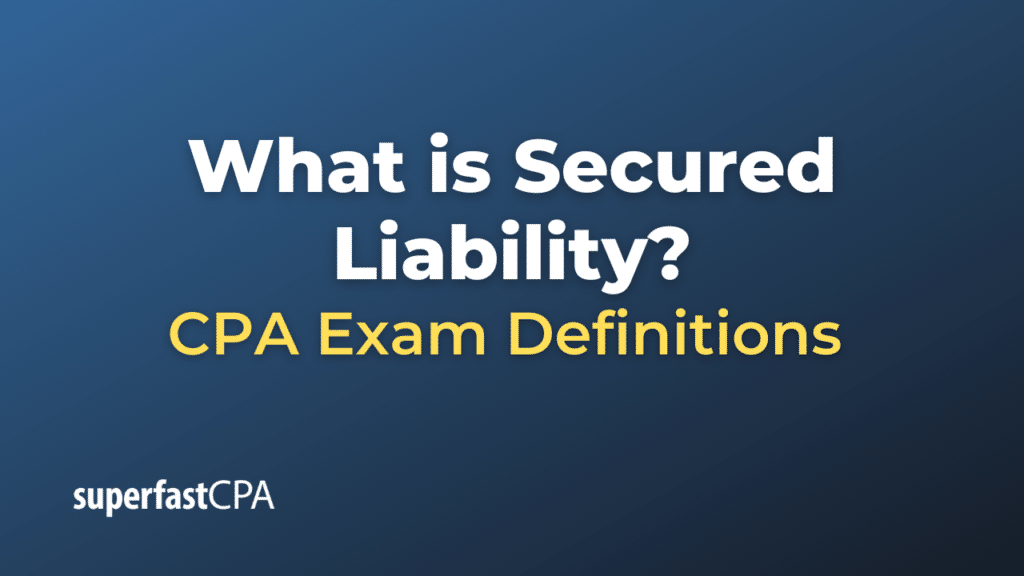Secured Liability
A secured liability refers to a debt or obligation for which the borrower has pledged specific assets as collateral to ensure repayment to the lender. If the borrower defaults on the repayment terms (e.g., missing scheduled payments), the lender has the right to seize the collateral to recoup the owed amount.
The collateral provides the lender with an additional layer of protection against the risk of the borrower’s default. Since there’s an asset backing the liability, secured liabilities typically carry lower interest rates compared to unsecured liabilities, as they represent a lower risk for the lender.
Examples of secured liabilities include:
- Mortgage Loans: The most common form of secured liability. When an individual takes out a mortgage to buy a house, the house itself serves as collateral. If the borrower fails to make scheduled payments, the lender can foreclose on the property.
- Car Loans: When purchasing a vehicle with a loan, the car itself typically serves as collateral. If the borrower defaults, the lender can repossess the vehicle.
- Equipment Loans: Businesses might take out loans to purchase machinery or equipment, and those assets serve as collateral for the loan.
- Secured Credit Cards: These are credit cards backed by a cash deposit from the cardholder. The deposit acts as collateral and is usually equal to the card’s credit limit.
- Lines of Credit: Some lines of credit, particularly those extended to businesses, may be secured by assets such as inventory or accounts receivable.
In contrast to secured liabilities are unsecured liabilities, which do not have specific assets pledged as collateral. Examples of unsecured liabilities include most credit card debts, student loans, and personal loans without collateral.
For lenders, secured liabilities represent a safer form of lending compared to unsecured liabilities because they have a specific claim on an asset if the borrower defaults. For borrowers, while they might benefit from lower interest rates, they also bear the risk of losing the pledged asset in the event of default.
Example of Secured Liability
Anna owns a successful bakery in her town. With a growing customer base and consistent profits, she decides it’s time to expand her business by opening a second location. However, she needs funds to lease the new space, renovate it, and purchase new baking equipment.
Securing a Business Loan:
- Visit to Local Bank: Anna approaches her local bank, TownBank, seeking a business loan of $200,000 for the expansion.
- Collateral Discussion : TownBank expresses interest in providing the loan, but they require collateral to secure the debt. Anna offers her original bakery’s professional-grade baking ovens, valued at $250,000, as collateral for the loan.
- Loan Agreement: Anna and TownBank finalize an agreement where the bank extends the $200,000 loan as a secured liability. The contract explicitly mentions that if Anna defaults on her loan repayments, TownBank has the right to seize the baking ovens to recover the owed amount.
Challenges Arise:
- Construction Delays: Anna’s new location faces several construction and licensing delays, pushing back the opening date by several months. This means she’s incurring costs without the expected revenue from the second location.
- Strained Finances: The delays lead to a strain on Anna’s finances, and she struggles to make her monthly loan repayments to TownBank.
Bank’s Action on Secured Liability:
- Notice of Default: After missing three consecutive payments, TownBank notifies Anna of her default on the loan terms.
- Seizing Collateral: As Anna is unable to catch up on the missed payments and continue regular payments due to her financial situation, TownBank exercises its right as the holder of the secured liability. They take possession of the professional-grade baking ovens from Anna’s original bakery location.
- Liquidation of Collateral: TownBank sells the baking ovens for $230,000. They use the proceeds to cover Anna’s outstanding loan balance and associated fees. The remaining amount is returned to Anna.
This example illustrates how a secured liability works in practice. Anna’s loan was secured against her baking ovens, which provided TownBank with a safety net against the loan’s default. While Anna faced unfortunate financial challenges, the bank mitigated its losses by liquidating the collateral.














